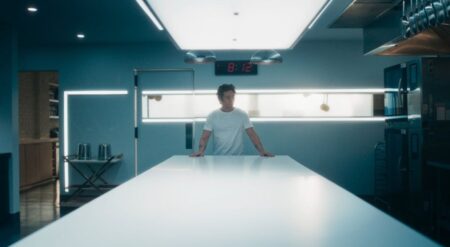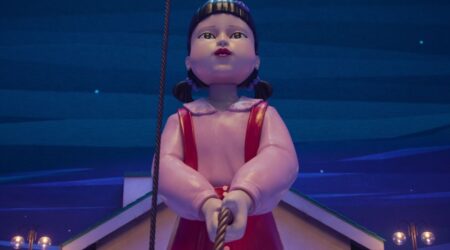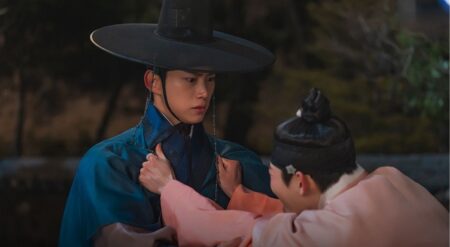
The Witcher burst into the live-action series world with a bang in 2019, managing to land with existing fans of both the book series and the game while also serving as a launching pad for new fans as well. Now, after a two-year wait, The Witcher Season 2 is here, and it’s building the Continent larger and grander than the last. Picking up immediately where the last season left off, Season 2 kicks off after the Battle of Sodden Hill with Yennefer (Anya Chalotra) as Frangilla’s (Mimi Ndiweni) captive and Ciri (Freya Allan) under Geralt’s (Henry Cavill) protection. However, convinced Yennefer’s life was lost at the Battle of Sodden, Geralt brings Ciri to the safest place he knows: Kaer Morhen (The Witcher’s keep).
Now, just like last season, reviewing The Witcher Season 2 is a dance of breaking down the season while also making sure not to spoil any of the surprises along the way–and there are many. But we’ll attempt it. The Witcher Season 2 is a story that builds on the characters we fell in love with last season, and with a more linear narrative, it’s easier to follow along. That said, while Yennefer, Geralt, and Ciri all get their due, the biggest accomplishment this season is expanding the Continent, its lore, and the characters’ impact.
While Season 1 was phenomenal, Season 2 beautifully builds on it, keeps the story progressing, and grows every bit of it. Namely, we get the chance to see the Continent’s kings, elves, humans, and demons strive for supremacy outside its walls. Yet, none of these political elements seem forced. Instead, they highlight where every character fits into the larger story and how every choice impacts others. For the majority of the series, each character is moving on their own path. While not situated in different time periods like last season, they are separate, working to converge on each other by the last third of the season. This build-up allows us to explore character dynamics on their own before exploring what they mean altogether.
For Yennefer, we see a vulnerability that hasn’t been showcased before. After a shocking display of power at the end of Season 1, Yennefer confronts what her power means to her and has to ask if it’s filled the void that’s been in her since she arrived at Aretuza. This journey forces Yennefer to confront her past and contemplate where she is moving towards. In a similar fashion, we get the chance to see more of Frangilla and explore how Mages are expected to wield power in silence, as someone who influences the decision-maker instead of making it themselves.
While the series’ mages have spotlights in The Witcher Season 2, the standouts are Geralt and Ciri. More specifically, their relationship and how they change each other. In Enola Holmes, we got to see Cavill as soft boi Sherlock, and in The Witcher Season 2, we get to see him as well, a father. Geralt is still tough as nails, and he teaches Ciri to be too. For him, his focus is teaching her how to survive a world that is out to capture her or, at worst, kill her. Over the course of the season, Geralt undergoes character growth that has him showing emotion that Witchers shouldn’t have. He cares deeply about Ciri and about Vesemir (Kim Bodnia). By bringing Ciri to Kaer Morhen, he’s allowing her to become closer to him, he’s allowing her in a space that made him who he is, and in some ways, he’s hoping it’ll make her a survivor even more than she already is. The simple act of bringing Ciri “home” is a choice that marks the acceptance of his responsibility.
In the same vein, we see how Geralt and Vesemir’s relationship created who he is today. Witchers should be without emotions, but that doesn’t mean they are without bonds. In fact, Vesemir is a father to his Witchers and Geralt. There is a kindness in the surly demeanor that warms the cold climate around Kaer Morhen. The tender moments between a Geralt who has seen too much and Ciri, who is much stronger than she appears, are ones that happen when he treats her wounds or when she stands her ground against a monster. The Witcher Season 2 shows grit and violence while also showing connection and empathy. Despite the violence and pain that has happened at Kaer Morhen in the past and in the present, it’s also a place of belonging that makes the Witchers more dynamic than just being mutated monster hunters.

And while the dialogue and character connection are what make The Witcher Season 2 fantastic, the costuming, practical effects, and fight choreography is what put it over the top. For starters, the women of The Witcher don’t all share the same aesthetic. Their costuming is as vast as their personalities, and for once, in fantasy, we get to see Black characters, particularly Frangilla, costumed with hairstyles that don’t hide their natural hair texture or styles to skew Eurocentric, but rather allow them to exist in fantasy without hiding their identity.
Next, we have the practical effects designs that help the creatures and monsters of the series feel at place in each episode. Sure, there are some iffy landscapes made with CGI that don’t stand up well, but when it comes to the monsters, the effects crew on The Witcher Season 2 hits it out of the park. In fact, the strength of this series is in the practical effects, and when they’re at their best, they help accentuate the digital effects. This is most true in the action sequences.
Like last season, The Witcher Season 2 manages to bring to life certain visual moments in the fights that call to the video games. This incorporation of in-game parries and the visualization of magic work because the actors and the practical stunts are perfect times for their usage. Additionally, this season gives me something to be thankful for: slow-mo used for effect. Over the past few years, slow motion has been used relentlessly to the point that it’s become less of a way to accent the action and more so a crutch to be used for actors not trained enough to pull off the choreography. The Witcher Season 2 doesn’t have this problem. Instead, the pacing of the action sequences uses time manipulation to showcase the skills of those involved in the fight and to highlight key moments of impact. This allows Cavill to shine in his stuntwork in a way that helps solidify The Witcher as a series that doesn’t just provide good fantasy storytelling but great action as well.
The Witcher Season 2 was worth the wait. This season we see character development, worldbuilding, and gripping action moments. We get to see lore expand and choices be made that ripple across story threads, and the pacing of the season, while more linear than last, still allows for the narrative to barrel towards one endpoint but still reveal surprising events. If you loved Season 1, you’ll love Season 2, and if you’ve been skeptical about jumping into the Continent, now is time to take the leap.
The Witcher Season 2 is streaming exclusively on Netflix on December 17, 2021.
The Witcher Season 2
-
Rating - 9/109/10
TL;DR
The Witcher Season 2 was worth the wait. This season we see character development, worldbuilding, and gripping action moments. We get to see lore expand and choices be made that ripple across story threads, and the pacing of the season, while more linear than last, still allows for the narrative to barrel towards one endpoint but still reveal surprising events. If you loved Season 1, you’ll love Season 2, and if you’ve been skeptical about jumping into the Continent, now is time to take the leap.






